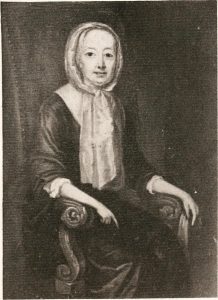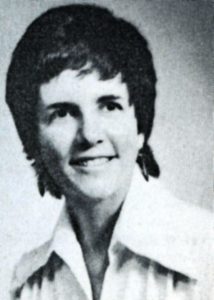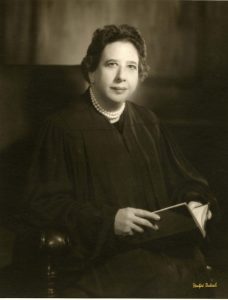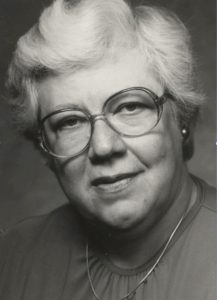Brandywine Stories: Four Women Who Shaped Chester County and Pennsylvania
 During Women’s History Month this March, we celebrate four women who made an impact on our region. Each has a distinguished story: three made political change that transformed our lives, and the fourth became a leader in historic preservation and transformed our communities. Each woman is a champion of her time and shaped our area by instilling positive values that remain with us today.
During Women’s History Month this March, we celebrate four women who made an impact on our region. Each has a distinguished story: three made political change that transformed our lives, and the fourth became a leader in historic preservation and transformed our communities. Each woman is a champion of her time and shaped our area by instilling positive values that remain with us today.
These four are inspirations for women seeking to make a difference. The short profiles serve only as an introduction to their significant contributions. We hope they will inspire you to learn more.
First Lady and Governor of Pennsylvania
Hannah Callowhill Penn (1671–1726)
 When William Penn died in 1718, his widow, Hannah Callowhill Penn, became governor of what was then the Province of Pennsylvania. She’s the only woman to have served in that position in Pennsylvania. She also became owner of Penn’s extensive estates and managed his many business affairs.
When William Penn died in 1718, his widow, Hannah Callowhill Penn, became governor of what was then the Province of Pennsylvania. She’s the only woman to have served in that position in Pennsylvania. She also became owner of Penn’s extensive estates and managed his many business affairs.
William ensured his much younger widow would remain in charge by naming her his successor in his will, an unprecedented action at the time. Hannah was prepared for success when, in his final years and in declining health, William taught her the skills needed by having her manage projects with his oversight. By the time of William’s death, Hannah was in full command of business and politics, despite being unsuccessfully challenged by William, Jr., a son from Penn’s first marriage.
Among Hannah’s many accomplishments were settling a land dispute with Lord Baltimore of Maryland that kept Philadelphia within Pennsylvania and managing sales of farmland in the Welsh Tract, where West Chester would eventually be located. Among her many honors was being the first woman granted the status of Honorary Citizen of the United States. Callowhill Street in Philadelphia is named for her.
Hannah’s portrait was hung at the state house in 2014. Former Governor Tom Corbet proclaimed, “The wisdom of her leadership and strength of her character mark her as the first women to lead what has become the Keystone State in our nation. She is an example of women’s leadership in Pennsylvania long before we were an independent nation.”
First Woman State Representative
Patricia Ann Crawford (1928–2008)
 In 1969, the regional population in the Brandywine Valley expanded to require establishing a new representative district in the Commonwealth, resulting in creating the 156th district in Chester County. At the time, Chester County’s elected officials were exclusively male. Yet even absent a precedent, there was an opportunity for diversity at the ballot box.
In 1969, the regional population in the Brandywine Valley expanded to require establishing a new representative district in the Commonwealth, resulting in creating the 156th district in Chester County. At the time, Chester County’s elected officials were exclusively male. Yet even absent a precedent, there was an opportunity for diversity at the ballot box.
The person to meet that opportunity was Patricia Ann Crawford, a woman active in local and state politics, well versed in election strategies and with ample experience with local voters. A graduate of what’s now West Chester University, she was well known within Chester County’s Republican Party and stayed connected with the powerbrokers of the day.
Crawford actively began campaigning within the new district and soon became the first woman to be elected to the State House of Representatives, serving three consecutive terms, from 1968 to 1976. Her political career continued to grow, and she went on to serve as Pennsylvania’s Deputy Secretary of the Commonwealth as well as on the Crime Victim’s Compensation Board.
Notably, Crawford’s service in the House of Representatives paved the way there for four more women (so far): Elinor Z. Taylor, Barbara McIlvaine Smith, Carolyn Comitta and Dianne Herrin.
Judge and Trailblazer
Genevieve Blatt (1913–1996)

Considered the “first lady of Pennsylvania politics,” Judge Genevieve Blatt was the first woman elected to a statewide office in 1954 and the first to serve as an appellate judge on Pennsylvania’s Commonwealth Court in 1972 (she was later elected to the judgeship after her initial appointment). Her election set the stage for other women, and today seven of the 15 Chester County Judges are women.
A 1937 graduate of the University of Pittsburgh law school, Blatt also became the first woman to blaze a trail for girls to compete in interscholastic athletics through her landmark ruling that high school sports teams in Pennsylvania, including at private schools, could no longer discriminate on the basis of gender.
Notable women who followed her onto the bench include Paula Francisco Ott, who, in 1991, became the first woman judge and eventually the first female President Judge in Chester County. In 2020, Deborah “Deb” Ryan became the first female District Attorney for Chester County and was elected judge in 2023.
Also noteworthy: by 1988, two African American women began serving on the bench where only men had sat before — Juanita Kidd Stout was elected to the Pennsylvania Supreme Court and Doris Smith-Ribner to the Commonwealth Court. After over 50 years of public service, Blatt retired from the bench in 1993.
Master of Historic Preservation
Alice Kent Schooler (1927–1997)

As the first female architectural historian of Chester County, Alice Kent Schooler pioneered best practices for historic preservation in West Chester and surrounding communities.
Schooler surveyed hundreds of West Chester’s historic structures that were used to establish local historic districts recognized by the National Trust for Historic Preservation. The surveys, many conducted with volunteers and which included details about architectural significance and its connection to the community, are an invaluable resource for maintaining the authentic integrity of old buildings. Schooler’s work, which continued when she was hired by John Milner Architects as an architectural historian in 1974, is used by architects and historians today.
Her 1985 book, Livable West Chester, An Architectural Overview, explores the borough’s architectural styles, detailing why they’re important to understanding our historic communities.
A frequent lecturer, Schooler advocated for keeping all historic architectural features — whether High Style or vernacular common styles — that reflect the local culture, an important principle for creating historical understanding within communities. It also set a standard to avoid artificially applying design features influenced by so-called “Colonial Revitalization” practices or to “Victorianize” a streetscape in a way that’s not reflective of authentic historical features.*
*Information provided, in part, from publications by Jane Dorchester and the Chester County History Center.
 Malcolm Johnstone is the Community Engagement Officer for Arts, Culture and Historic Preservation for the Cultural Alliance of Chester County, an initiative of the Chester County Community Foundation. His column raises awareness of Chester County’s rich heritage as we journey to 2026: the year the U.S. celebrates the 250th anniversary of our nation’s independence.
Malcolm Johnstone is the Community Engagement Officer for Arts, Culture and Historic Preservation for the Cultural Alliance of Chester County, an initiative of the Chester County Community Foundation. His column raises awareness of Chester County’s rich heritage as we journey to 2026: the year the U.S. celebrates the 250th anniversary of our nation’s independence.
